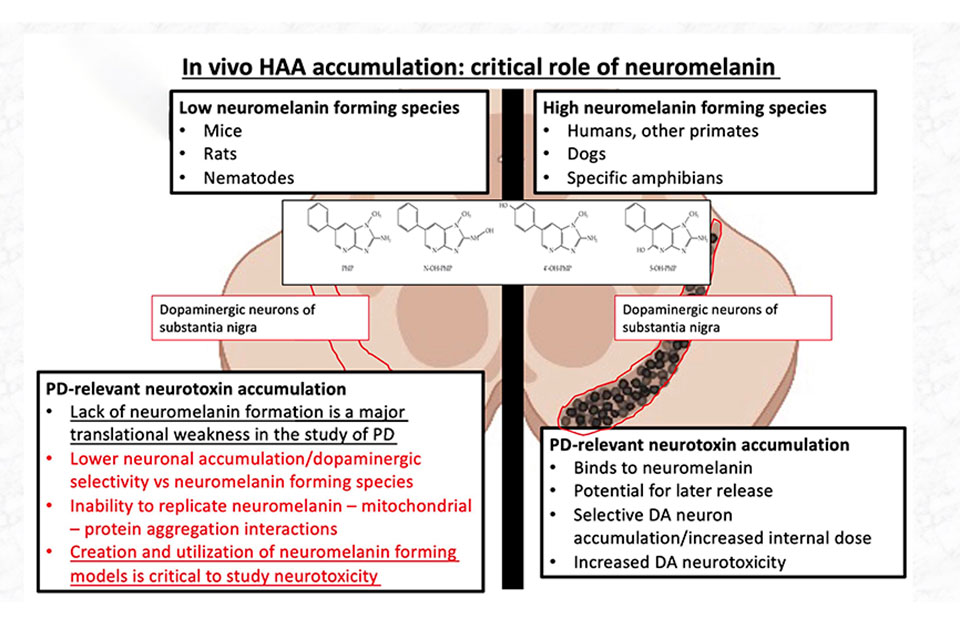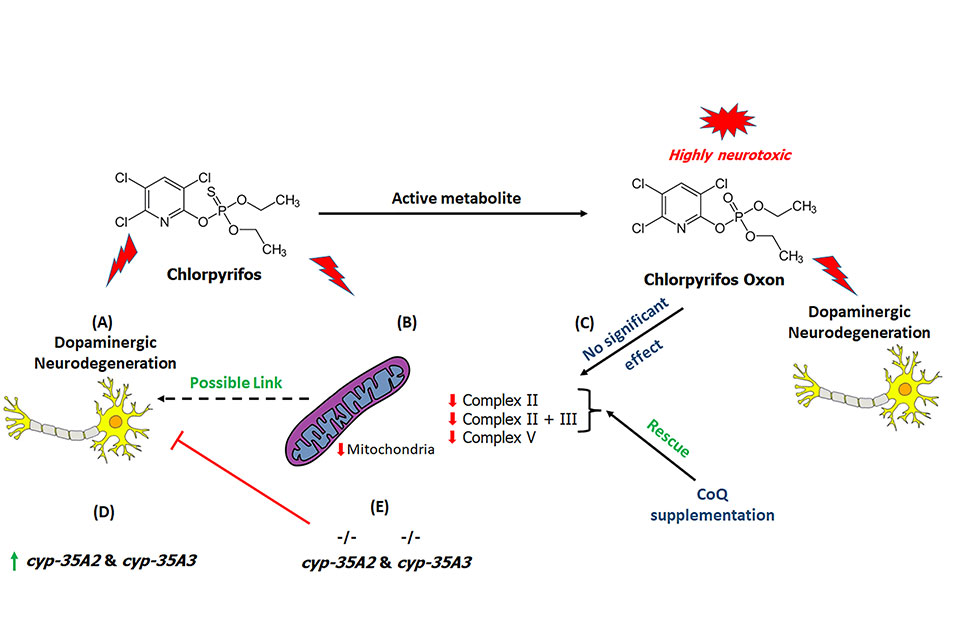Research
About Our Research
Our overarching focus is to discover mechanisms of environmentally induced neurodegeneration. Ultimately we hope to identify modifiable risk factors and pathogenic pathways that could reduce incidence of neurodegenerative diseases and also lead to new treatment options. All of our studies are conducted with human relevant in mind, where we aim to achieve maximal translational potential. Here, we always aim to link phenotypes back to specific biochemical and molecular mechanisms of action. Moreover, the lab regularly utilizes comparative biology approaches, where similarities and differences across species better inform our understanding of neurotoxic responses.
Dopaminergic neurotoxicity of heterocyclic aromatic amines – role of neuromelanin 
Heterocyclic aromatic amines (HAAs) are dietary toxicants, many of which are formed during meat charring. HAAs have been primarily investigated as genotoxicants. Much of our data and papers suggest specific HAAs are selectively toxic to dopamine neurons , bearing potential relevance to Parkinson’s disease. More recently, our efforts have focused on interactions with neuromelanin, a catabolism product of dopamine. Such interactions potentially explain selective sensitive of dopaminergic neurons.
PFAS neurotoxicity 
Across a variety of model systems we have shown that per- and polyfluoroalkyl substances (PFAS) target neurotransmission, especially dopaminergic neurotransmission. From basic biochemical mechanisms, such as neurotransmitter production and mitochondrial toxicity through adverse neurological phenotypes, we are exploring the role PFAS may have in mental health disorders and neurodegenerative diseases.
Non-cholinergic neurotoxic targets of organophosphates 
Organophosphates (OPs) are typically investigated as cholinergic neurotoxicants. Emergent data suggest long-term, low dose exposures may target other neurotransmitter systems. Our work has advanced understanding of how pesticide OPs may produce dopaminergic neurotoxicity, potentially relevant to Parkinson’s disease, where we are especially interested in military relevant exposures.